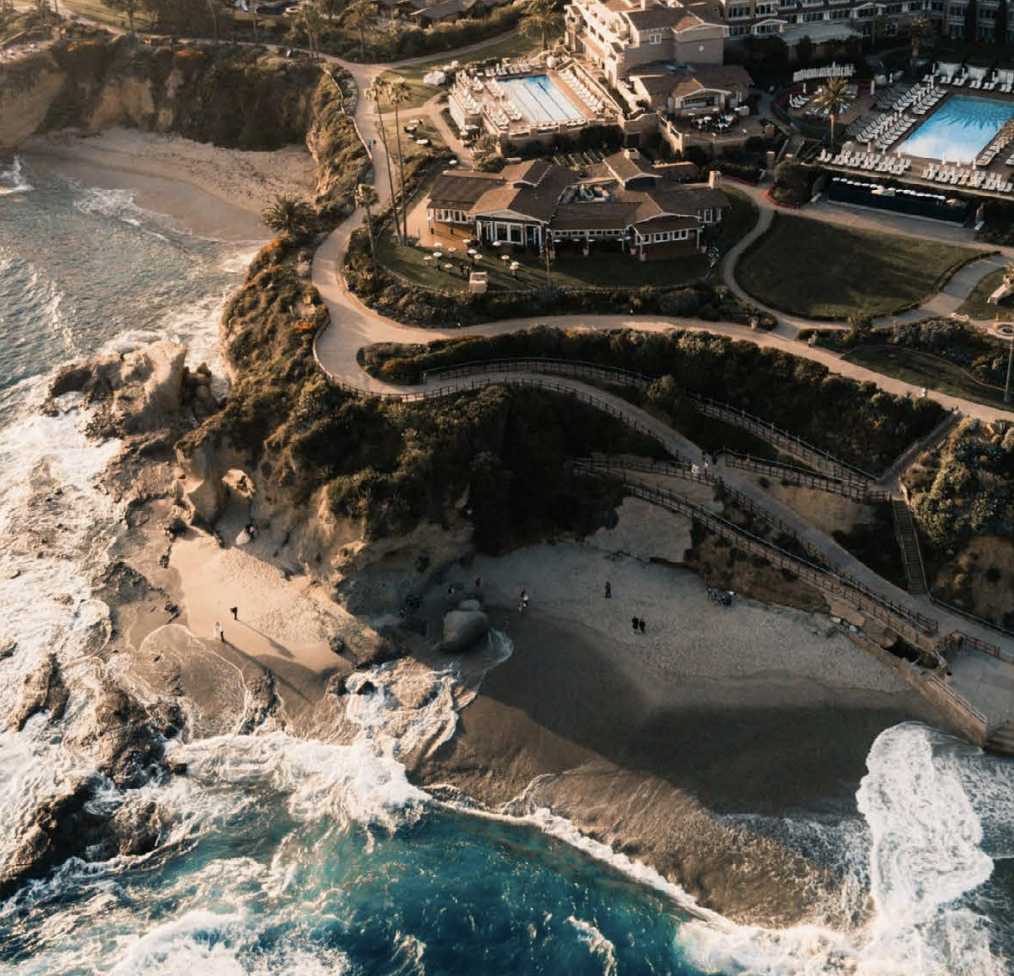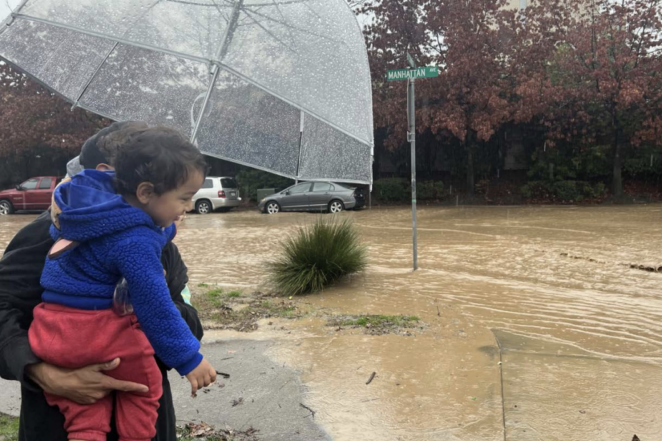Adapting Coastal Cities and Territories to Sea Level Rise in North America – U.S. West Coast: Challenges and Leading Practices

Introduction
Stretching over 63,160 kilometers (39,246 miles), the Pacific coast of the U.S. is home to 34 million inhabitants as well as spectacular biodiversity. However, the landscapes and coastal uses that contribute to the attractiveness of the region are threatened by sea level rise (SLR). SLR poses enormous challenges for the coastal cities and towns distributed across Alaska, Washington, Oregon, and California – the most populous state in the U.S. While ambitious climate change mitigation policies are imperative and must remain a priority to limit the magnitude of SLR, the phenomenon of SLR will nevertheless continue in the coming centuries to millennia, underscoring the vital need for adaptation.
Increasingly, coastal cities are seeking approaches that can deliver transformative change, through spatially diverse and long-term adaptation responses. Their decision-making needs to be informed by relevant and up-to-date knowledge, grounded in the visions of their communities. Intended for policymakers, city and county planners, and all actors involved in adaptation planning who pursue transformational change, this report provides an overview of current practices and remaining challenges to define and implement adaptation strategies, shared during the Sea’ties workshop “Adapting coastal cities and territories to SLR in the U.S. West Coast” held in September 2022, as well as 26 preliminary interviews.
Three key topics are addressed in the following sections:
- Although a wealth of scientific data is available in the region, these can be disconnected from local needs. Cities need locally relevant information, and producing actionable knowledge to initiate action is key. To this end, existing networks and cross-sector partnerships ought to be drawn on to enable mutual learning and knowledge sharing.
- Rooting adaptation strategies in communities’ visions is critical to achieve just and equitable adaptation. Indeed, coastal communities are well positioned to understand local risks, needs, and opportunities.
- Coordination among cities and the phasing of adaptation measures facilitates SLR adaptation over time and at scale. Unlocking co-benefits for cities and their inhabitants entails deploying transformative adaptation policies. Overcoming the taboo of managed retreat and relocation is also pivotal in ensuring that all options are considered for informed decision-making.
This article is an abridged version of the original text, which can be downloaded from the right-hand column. Please access the original text for more detail, research purposes, full references, or to quote text.
Method
This report draws on discussions held during the Sea’ties workshop “Adapting coastal cities and territories to sea level rise in North America: U.S. West Coast”, held on September 12, 2022, at the Seymour Marine Discovery Center in Santa Cruz, California.
The workshop mobilized over 50 actors of coastal adaptation (elected officials, practitioners, scientists, NGOs, and consultants) from across California to discuss adaptation practices, challenges, and needs encountered in the region, through three thematic sessions:
- Building on scientific knowledge and science-stakeholder networks to inform adaptation;
- Equity and social justice: fundamental levers for adaptation and communities’ well-being;
- Implementing hybrid and adaptive solutions for coastal infrastructure.
The report draws on the findings from the workshop, complemented by 26 individual interviews held between 2021 and 2022, with experts working across the West and East Coasts of the U.S.
Mobilizing actionable knowledge to address local adaptation needs
A wealth of scientific data, scenarios and tools is available in the U.S. In addition, a diversity of actors (federal and state agencies, local governments, non-profit organizations) provides guidelines and resources aimed at facilitating coastal adaptation. However, cities and counties also need actionable, practice-oriented, and downscaled information that is relevant to their operational level.
Key messages:
- Locally relevant knowledge for SLR adaptation is best produced in-situ and in collaboration with local organizations and communities, which hold intimate understanding of the features and dynamics of their territory, as well as with relevant state and federal actors central to effective implementation.
- Collaborating with Indigenous and traditional knowledge holders is particularly relevant to the monitoring of coastal changes and supports the development of comprehensive adaptation strategies that are mutually beneficial to human communities and wider ecosystems.
- In a context of deep uncertainty, incorporating scenarios over sequenced time horizons into adaptation planning and monitoring actions over time are key to deployment of flexible adaptation strategies and addressing future, long-term impacts of SLR in a phased manner.
Refer to pages 19-30 of the full report to explore this theme, and a case study on ‘UCSC Coastal Resilience Lab – Valuing risk reduction services provided by coastal ecosystems’ in more detail.
Rooting adaptation strategies in communities’ visions
Key messages:
- Socially vulnerable groups are hit the hardest by the impacts of SLR. Placing equity at the heart of adaptation action thus provides the opportunity to accelerate social reform and achieve greater justice as a legacy of coastal adaptation.
- Community-driven adaptation is best suited to develop strategies that meet the needs of coastal communities and enable the realization of their aspirations for the future while avoiding maladaptation.
- Meaningful engagement takes time and can make the development of adaptation strategies harder to predict. Yet moving at the speed of trust is key to strengthening relationships between local decision makers and communities to shape resilient and prosperous futures for coastal cities.

To explore this theme in more depth, and a case study on ‘East Palo Alto Rain Garden Project – Centering communities in resilience-building’, refer to pages 31-38 of the report.
Delivering transformative adaptation policies
Key messages:
- Coordinating among cities reflects geomorphic realities and enables the development of adaptation strategies that take full consideration of local opportunities for action and the possible negative impacts of adaptation options.
- Considering social objectives and integrating several policy domains into adaptation planning are key in designing new models of coastal living to build cities that are not only safer but more equitable, inviting and where communities can thrive.
- Reframing the debate around managed retreat is urgently needed. When anticipated, consented to, and phased, it can yield transformative results for coastal communities in the form of social, health, economic, political, and environmental benefits.
Learn more about this theme and its case study on ‘Resilient Coast Santa Cruz – Cross-sector collaboration for long-term resilience’ on pages 39-48 of the report.
Suggested Citation:
Ocean & Climate Platform. (2023). Adapting Coastal Cities and Territories to Sea Level Rise in North America – U.S. West Coast: Challenges and Leading Practices. Ocean & Climate Platform. 56 pp.
The Ocean & Climate Platform (OCP) is an international network of more than 100 organizations from civil society – including NGOs, research institutes, foundations, local authorities, international organizations, and private sector entities – that draws on the best available science to promote ocean-based solutions to tackle climate change and biodiversity loss. The OCP provides a space where relevant stakeholders can engage in a constructive dialogue, fostering exchanges and reflections. Through its role as a science-policy interface, the OCP supports decision makers in need of scientific information and guidance in the definition and implementation of public policies.
Related resources
- Integrating Climate Adaptation: A Toolkit for Urban Planners and Adaptation Practitioners
- Urban Resilience Roadmap
- Coastal Flooding, Climate Adaptation and Community Engagement in the City of Surrey, Canada
- Rising Seas and Shifting Sands: Combining Natural and Grey Infrastructure to Protect Canada’s Coastal Communities
- Principles for Locally Led Adaptation
(0) Comments
There is no content